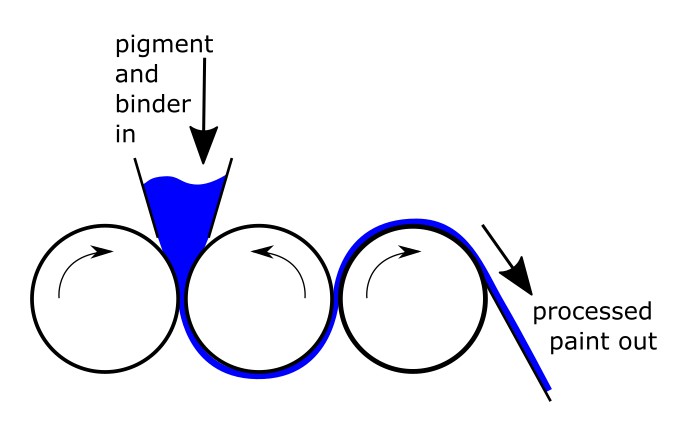While a three roll mill is a fairly straightforward concept, to function well they have to made to pretty specific technical specifications.
Each roller turns in the opposite direction of the one before it, and at variable speeds.

The gaps between the rollers must be very small - almost touching, and adjustable. Ideally the material is run through the mill, then the roller gaps are tightened, and the material is run again, as many as 5 times.
For most mills the gap between the rollers helps to break down the pigment into smaller pieces. In this case the pigments are already milled small enough that this won’t be a major concern. We’re primarily turning a chunky and inconsistent mix into a smooth and consistent one.
I’ve added for myself the challenge of trying to build this on the lowest reasonable budget. My first prototype will be built using a raspberry pi pico, a motor shield, power supply, and dc motors. A pico seems capable of controlling 4 motors, and this will only require three. This leaves a motor slot left over for controlling the gap adjustment. I have a variety of ideas on how to do that, but they will require testing. I’m sure that will evolve over a number of attempts.
The biggest sourcing concern for me is to find stainless steel rollers that are readily available for anyone building a milling machine, mountable for precise turning and adjustment, and not impossibly expensive. I have two options I’m considering at the moment. The first is steel rolling pins (the kind for cooking). They’re readily available, but may be difficult to mount without drilling additional holes. The second is stainless steel pipe couplings. The advantage to couplings is that they are threaded on the inside in standard pipe thread, allowing for a variety of ways to mount them. The disadvantage is that they are most commonly available 1-2” long, which is too short for my needs.
So for now my first move is to get a functional prototype working, so that I have something to build on and improve.
 technoplastique
technoplastique
Discussions
Become a Hackaday.io Member
Create an account to leave a comment. Already have an account? Log In.